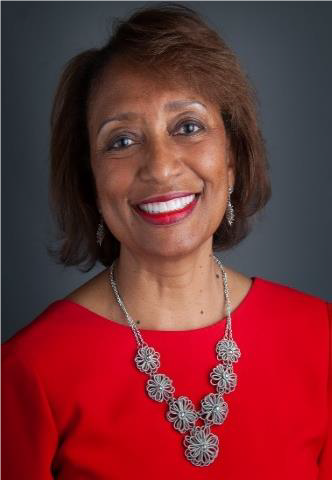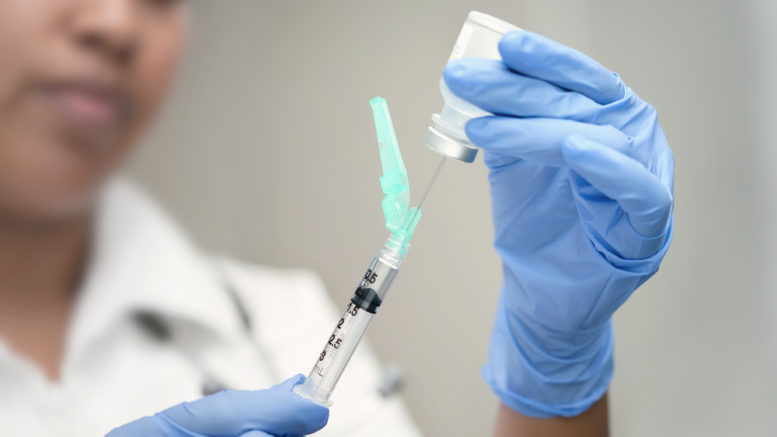Editor's note: This Q&A originally appeared in the March 2020 issue of Healthcare Hygiene magazine.
Healthcare Hygiene magazine spoke with Lydia F. Crutchfield, MA, BSN, RN, CLC, executive president of the Association of Occupational Health Professionals in Healthcare (AOHP) and director of Corporate Teammate Health for Atrium Health, about the significance of the 20th anniversary of the Needlestick Safety and Prevention Act, and the work that remains to reduce occupational exposures.

Lydia F. Crutchfield, MA, BSN, RN, CLC
HHM: What do you believe has changed since the federal Needlestick Safety & Prevention Act (NSPA) of 2000 was signed into law?
Lydia Crutchfield (LC): There have been positive changes in response to the NSPA. Although the changes have not made as much impact as desired, we are moving in the right direction and not moving backward. There has been more effort put into data collection and analyzing the data for improvements. Sharps injury incidence/100 FTE from 2000 to 2018 have decreased from 4.4 percent to 2.2 percent and from 2011-2018 mucocutaneous exposures have decreased from 27.3 percent to 23.9 percent.1
HHM: Do you think we are trending more positively or negatively toward sharps injury/occupational exposure prevention in 2020?
LC: The trend has been positive but much slower than expected. There are several aspects to consider with this gradual momentum.
HHM: Are there still particular areas of concern that need to be addressed?
LC: Certainly. To some extent, there may be a prevailing thought of “It’s not going to happen to me, I’m careful.” Therefore, needed precautions are not taken when they should be. It isn’t a matter of clinicians not being educated on standard precautions, or the correct procedures; they know what to do. Post exposure/needlestick, if one were to ask the question, “What could you have done to prevent this exposure or needlestick?” the healthcare worker could most likely articulate an appropriate response.
HHM: Why do sharps injuries and occupational exposures remain problematic?
LC: We live in a world, and especially a healthcare world, where things move fast, more is expected with less, increased stress, etc. These factors cannot be separated from the workplace and do affect how one does their job. As well, workplace practices remain in question.
HHM: How can they be addressed?
LC: We cannot consider ourselves “one and done,” with initial education by checking the box. Competency training is a must and should be done throughout employment with repeated education and training.1 There should also be reminders, safety rounds, any creative ideas to keep the employee’s safety in the forefront. Implementing policies and procedures without accountability is futile. However, accountability should be managed in a way that isn’t punitive because the prevailing message should be “we are here to help keep you safe.”
Communication is key. Have creative safety campaigns, make rates known to all, and share successes with administration.
Investigate – how, what, why, and prevention.1 Maintain, aggregate, and analyze the data.
Engagement – need commitment by staff, leaders, and administrators.1
HHM: Have occupational exposures been trending up or down in the last 20 years, and what are you hearing from your membership?
LC: Concurrently, occupational exposure trends have remained pretty steady as well. There are times when certain exposures to the unknown occur, we manage those as best we can. There are other times when mucocutaneous exposures are preventable with the appropriate personal protective equipment (PPE). We have a robust member listserv that offers a resounding sentiment in one area that relates to eye splashes that could have been prevented if only eye protection (goggles, face shields) had been worn. Ideas are shared to help mitigate these type exposures. There are various eye protection products on the market including different colors to help make this particular PPE more appealing.
HHM: Any improvement around needlesticks and national surveillance systems for work-related SIs and seroconversions?
LC: AOHP is proud of its survey called EXPO-S.T.O.P. (Exposure Survey of Trends in Occupational Practice) Our members are surveyed annually and these are some of our findings:
• More can be done to improve occupational exposure and needlestick injuries.
• Current legislation is not enough.
• Sharps injuries have immeasurable emotional impact.
• Sharps injuries costs are a huge burden ($6000/SI, $3.6M/day to hospitals alone)
• Just HIV/HCV/HBV – No! There are 60 bloodborne pathogens (26 viruses, 18 bacteria, 3 fungi, 13 parasites).
• More data is needed from as many US hospitals as possible – there are 6,200 of them.
HHM: What are the practice areas of the hospital that are still problematic for occupational exposures and sharps injuries?
LC: The department with the highest utilization of sharps products remains mainly the operating room (OR). There are spikes in the ED from time to time but there are many more patients in the beds that keep us on our toes to prevent exposures and sharps injuries. Why? Several types of sharps are used (sutures and closures, needles and butterflies, insulin syringes, etc.) in the OR and there may be uncontrolled situations in the EDs. Although these items are present in the ORs and EDs, the bedside patient has many equipment tubing that could cause exposures, like ventilator tubing, feeding tubes, Foley catheters, drainage tubes, etc. Sometimes healthcare personnel may not think or remember they can get splashed when emptying a Foley drainage bag. It happens.
HHM: How can infection preventionists assist occupational health experts in occupational exposure and sharps injury prevention?
LC: In smaller healthcare systems the infection preventionist and the occupational health worker may be one and the same or in the same department. In larger, more complex systems they may be in separate departments. But make no mistake, they do work hand and glove with each other with a focused mission of the safety of healthcare personnel and the patient. These entities support the great work they do by researching, collaborating, and reporting information that will help reduce occupational exposures and prevent sharps injuries. Because not all safety engineered devices are safe, both parties can partner with companies who engineer and manufacture sharps products for better devices from end user input. Infection preventionists and occupational health experts can both work to hardwire standard precautions, obtain staff input, and perform risk assessments to better understand the issues and barriers and to implement workable solutions. We will not take our focus from this important matter until there are no injuries!
Reference:
1. Terry Grimmond, FASM, BAgrSc, GrDpAdEd, Linda Good, PhD, RN, COHN-S, AOHP-BD Webinar Presentation: One Needlestick Injury Being Too Many US Sharps Injury Trends and Successful Reduction Strategies. Sept 26, 2019.

Be the first to comment on "Moving the Needle on Occupational Exposures: A Q&A with Lydia Crutchfield"